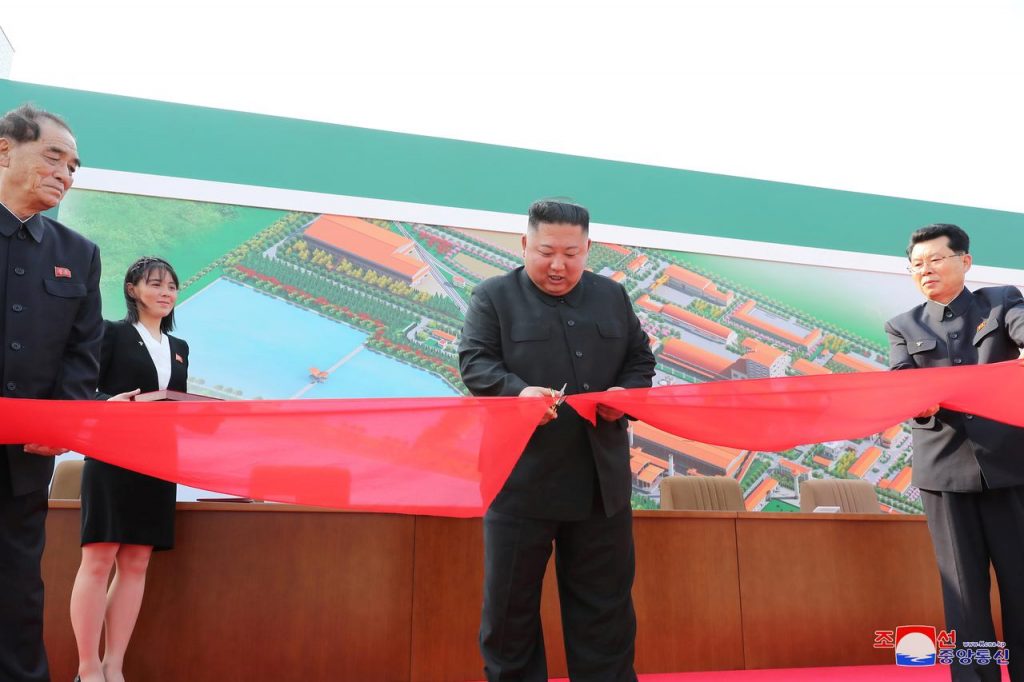Instead, state media simply showed him surrounded by aides and appearing confident at a gleaming fertiliser factory that is believed by outside experts to be part of a secret nuclear-weapons programme.
While much remains a mystery about Kim’s condition, the abrupt re-emergence of the relaxed and smiling leader was clear choreography of key messages from the secretive government: Kim is the supreme leader in full control of a drive to improve the impoverished country’s food security and economy, amid tough international sanctions and the threat of the new coronavirus.
CENTRE OF WORLD NEWS
The official Rodong Sinmun newspaper devoted three of its six pages on Saturday to touting Kim’s leadership, crediting him for what it called prosperity and self-reliance.
Reuters could not verify the accuracy of official accounts or the authenticity of pictures from the event.
The sprawling complex is the result of Kim’s vision to build a modern factory that will support agricultural production and make progress in automating its chemical industry, Pak Pong Ju, a party elder and a loyal aide to Kim, said at the ribbon-cutting where Kim reappeared.
North Korea is under sanctions over its nuclear-weapons and missile programmes, leaving the country chronically struggling with food shortages, aggravated by bad weather and mismanagement.
Kim’s appearance at the Sunchon fertiliser plant, which official media said occurred on Friday, was an example of “field guidance” – a key part of Kim’s public persona, where he presides over an event at a major industrial or social project, or at other times at military drills involving strategic weapons such as ballistic missiles or tactical warfare.
His second public visit this year to the site 50 km (30 miles) north of the capital Pyongyang included a sizeable audience of officials from the army, the ruling Workers’ Party and the local community. Many wore face masks in an apparent precaution against the coronavirus.
“Agricultural production is a top priority, which has a direct impact on the lives of the people,” Koh Yu-hwan, the president of the Korea Institute for National Unification, a South Korean government think-tank, said.
Koh said Kim’s sudden return was “a strategy to be in the centre of world news without resorting to nuclear or missile tests.”
THE ENTOURAGE
The makeup of Kim’s entourage featured familiar faces at such events, including two at the forefront of the North’s years-long drive to improve economic conditions: former premier Pak Pong Ju, who is Kim’s deputy at the State Affairs Commission, and Pak’s successor as premier, Kim Jae Ryong.
The pair had accompanied Kim on his last major field guidance, the March groundbreaking of the General Hospital in Pyongyang.
To Kim Jong Un’s immediate right on the podium was his sister, Kim Yo Jong, a vice director of the party’s Central Committee and unofficially her brother’s chief of staff.
SECRET PROJECT
The phosphate fertiliser factory in Sunchon, under construction since June 2017, has received much attention from North Korea’s leaders, with multiple visits by Kim Jae Ryong and Pak.
International observers say the plant is part of the North’s clandestine pursuit of uranium extraction for use in nuclear weapons, as the mineral can be a byproduct of making phosphate fertiliser.
There is strong evidence the factory is involved in uranium extraction, said a report this month by the Center for Nonproliferation Studies, based in California, in line with Kim’s policy of pursuing economic and military strength.
The North is motivated to use the plant because it is cost-effective and can easily conceal uranium enrichment, which Pyongyang has long sought to hide, the report said. Uranium enrichment offers an alternative to plutonium processing as a fuel for nuclear weapons.


